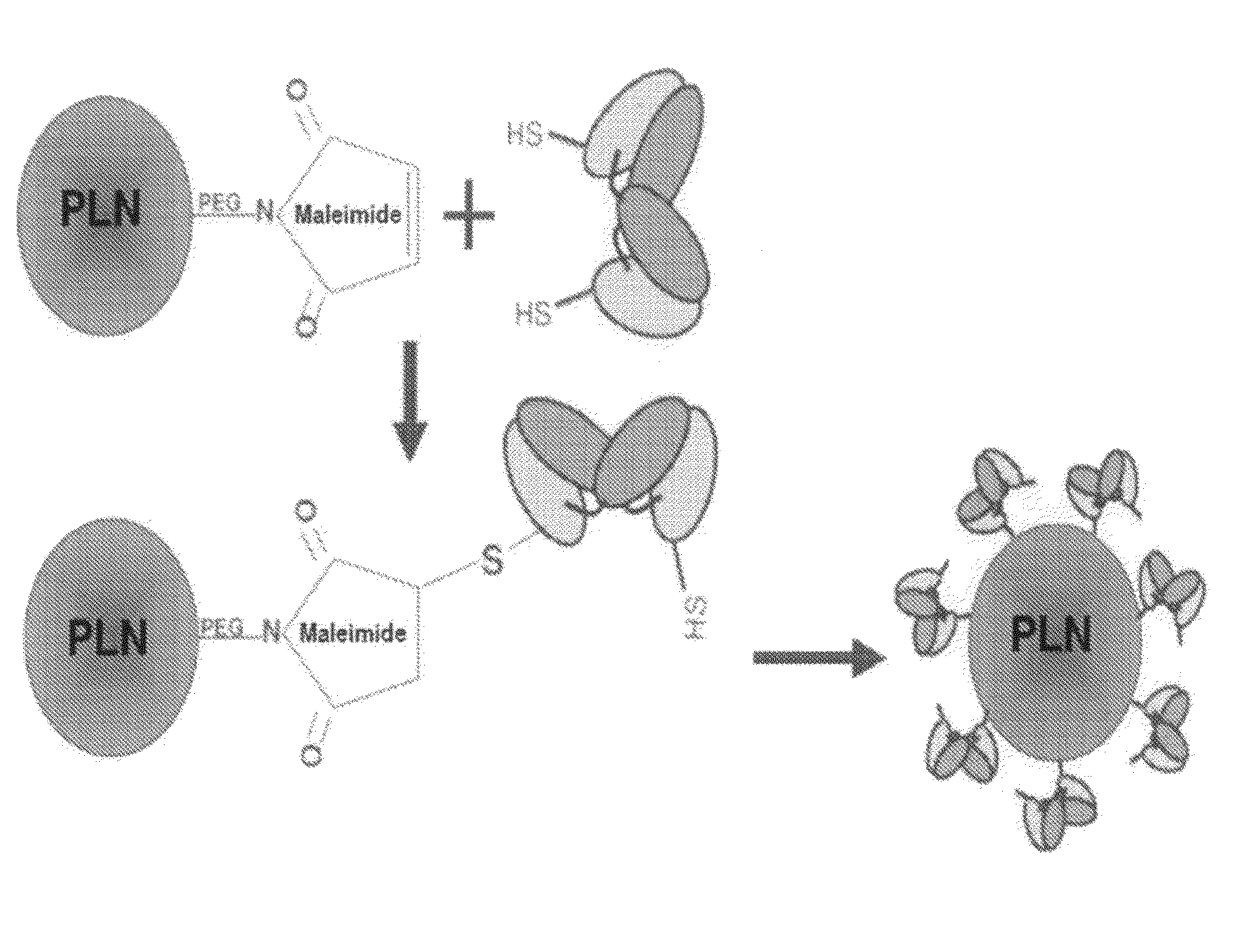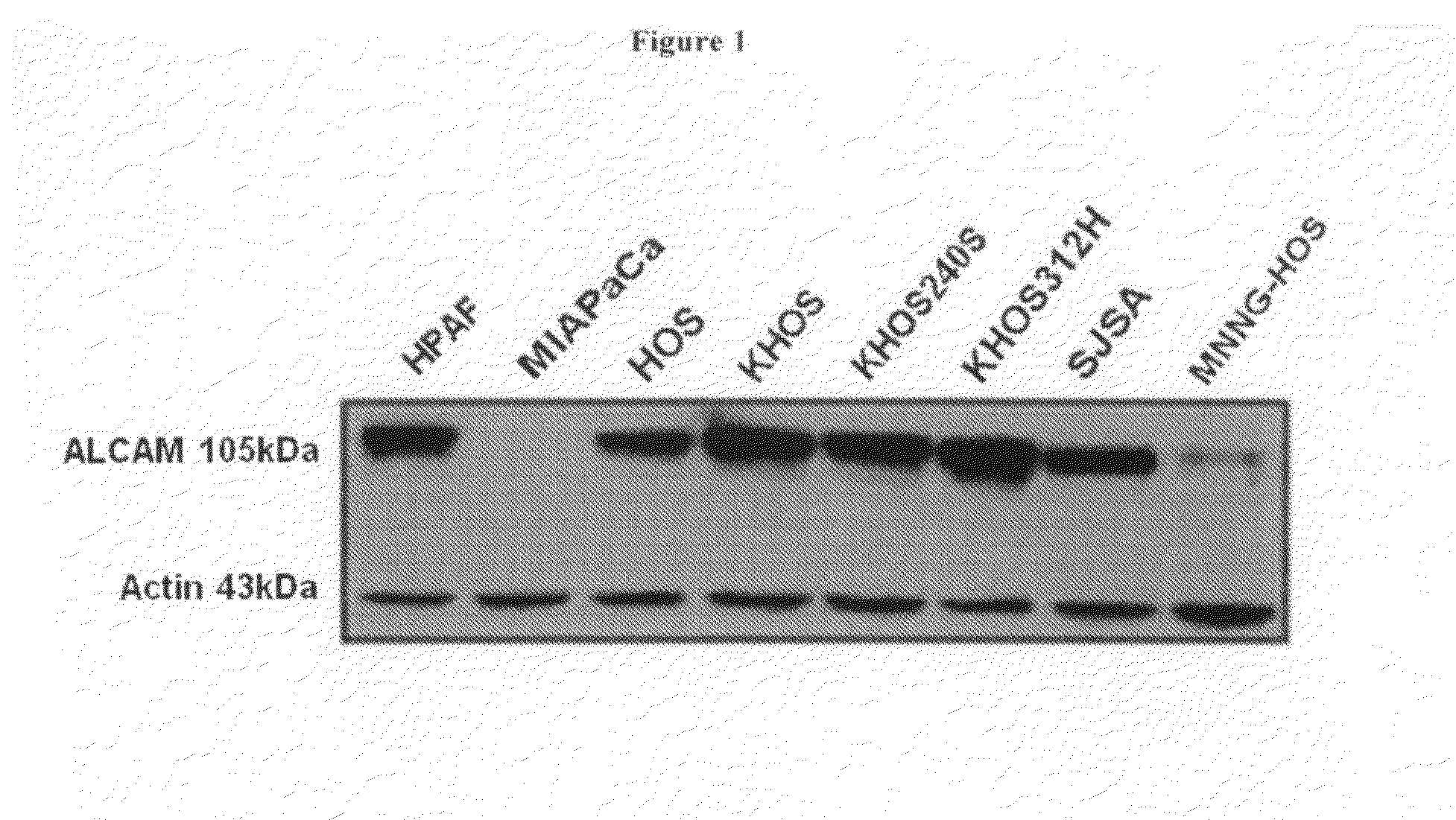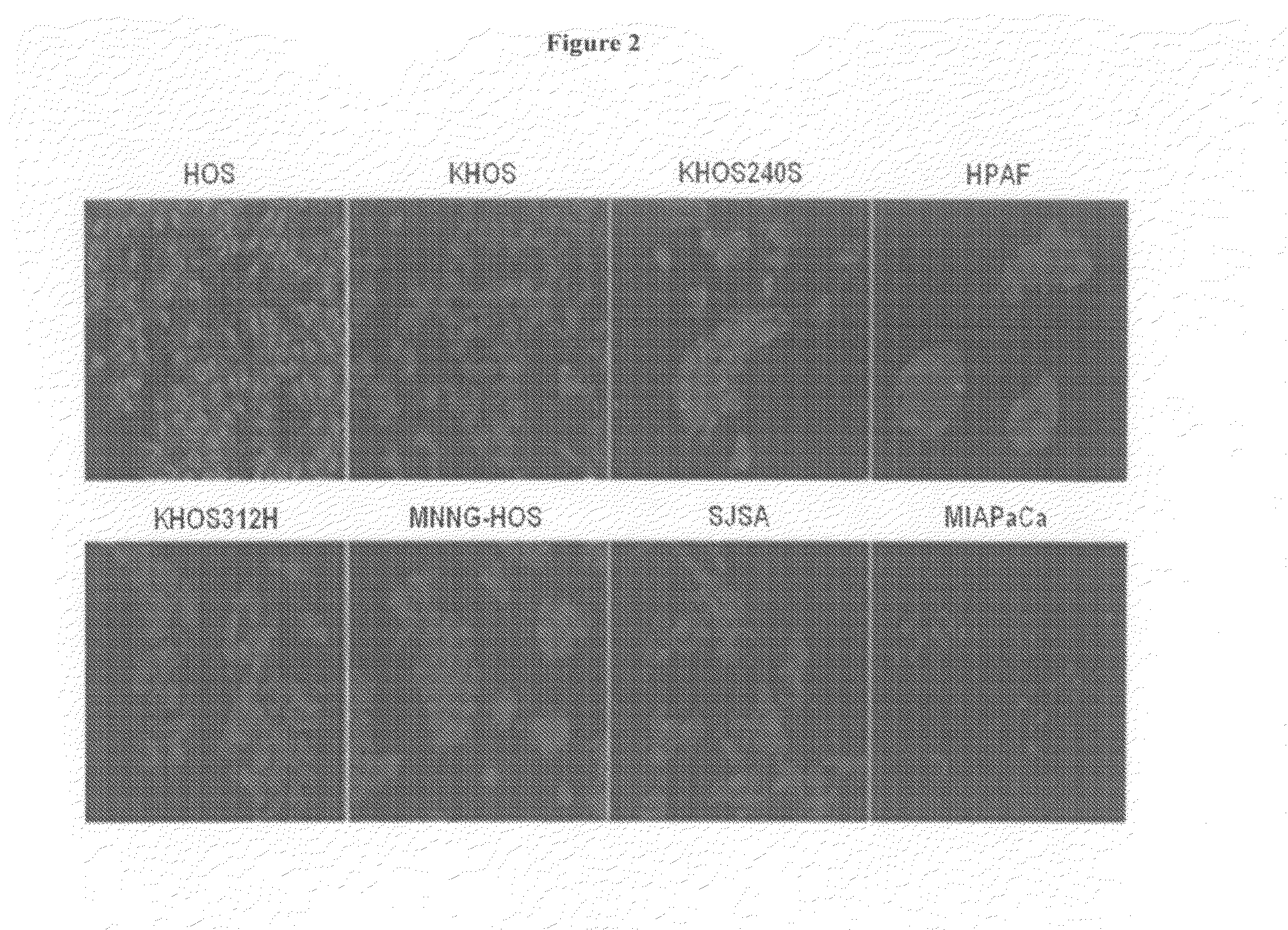Enhanced Growth Inhibition of Osteosarcoma by Cytotoxic Polymerized Liposomal Nanoparticles Targeting the Alcam Cell Surface Receptor
a technology of cytotoxic polymerized liposomal nanoparticles and osteosarcoma, which is applied in the direction of powder delivery, microcapsules, drug compositions, etc., can solve the problems of high drug concentrations and adverse or toxic side effects in patients, and achieve the effect of enhancing endocytosis or cell membrane fusion
- Summary
- Abstract
- Description
- Claims
- Application Information
AI Technical Summary
Benefits of technology
Problems solved by technology
Method used
Image
Examples
example 1
Binding of HPLNs to ALCAM-Expressing Osteosarcoma Cell Lines
[0209]Osteosarcoma is the most common primary malignant neoplasm of bone in children and adolescents and is characterized by a clonal unregulated proliferation of primitive osteoid-producing mesenchymal cells (Huvos A G, 1991, Bone tumors: diagnosis, treatment, and prognosis, pp viii, 784 p). Prior to 1970, the prognosis for patients with osteosarcoma who were treated with surgery alone, was a dismal 10-20% overall survival. Though aggressive surgeries would render most patients grossly tumor free, the vast majority would develop progressively fatal metastatic disease within two years. This suggested that at the time of their initial diagnosis, clinically undetectable tumor had already spread to distant sites in most patients and that effective systemic anticancer therapy was needed (Dahlin et al., 1997, Osteosarcoma of bone and its important recognizable varieties, American Journal of Surgical Pathology).
[0210]The developm...
example 2
Formulating HPLNs as Potential Therapeutic Delivery Vehicles
[0234]In this example, we show that HPLNs, when loaded with doxorubicin, display enhanced cytotoxicity to osteosarcoma cells. Our initial PLN formulation was composed entirely of 10,12-pentacosadiynoic acid (PCDA) derivatives and when polymerized formed a very fluorescent particle that could easily be detected. However these nanoparticles proved problematic when trying to adapt them for delivery of therapeutics. Attempts at effectively loading them with cytotoxic chemotherapeutic agents, either through encapsulation during vesicle formation or across ion gradients using the prepolymerized liposomes, failed at multiple levels. For this reason, hybrid PLNs were created that were composed of PCDA lipids mixed with saturated phospholipids found in many liposome formulations.
[0235]To approach this problem, we started with a standard liposomal formulation consisting of hydrogenated soy PC (where the major component is distearoylp...
example 3
Untargeted Doxorubicin-Loaded HPLNs are More Cytotoxic to Osteosarcoma Cells than Liposomal Doxorubicin Formulations
[0239]In this example, hybrid liposomes with recombinant anti-ALCAM antibody are shown to further improve cytotoxic killing of osteosarcoma cell lines. Since doxorubicin is a mainstay in the current treatment of osteosarcoma, it was chosen as our initial payload to test whether HPLNs could serve as therapeutic delivery vehicles. HPLNs and standard liposomes were fabricated by hydration of dried lipid films by brief sonication followed by extrusion through 100 nm polycarbonate filters as described in Example 1 above. The sizes of HPLNs and liposomes were approximately the same varying from batch to batch from 90 to 110 nm with a typical polydispersity index of about 0.1. Both particles were loaded with doxorubicin using ammonium sulfate gradients (Haran et al., Transmembrane ammonium sulfate gradients in liposomes produce efficient and stable entrapment of amphipathic w...
PUM
| Property | Measurement | Unit |
|---|---|---|
| Fraction | aaaaa | aaaaa |
| Fraction | aaaaa | aaaaa |
| Fraction | aaaaa | aaaaa |
Abstract
Description
Claims
Application Information
 Login to View More
Login to View More - R&D
- Intellectual Property
- Life Sciences
- Materials
- Tech Scout
- Unparalleled Data Quality
- Higher Quality Content
- 60% Fewer Hallucinations
Browse by: Latest US Patents, China's latest patents, Technical Efficacy Thesaurus, Application Domain, Technology Topic, Popular Technical Reports.
© 2025 PatSnap. All rights reserved.Legal|Privacy policy|Modern Slavery Act Transparency Statement|Sitemap|About US| Contact US: help@patsnap.com



